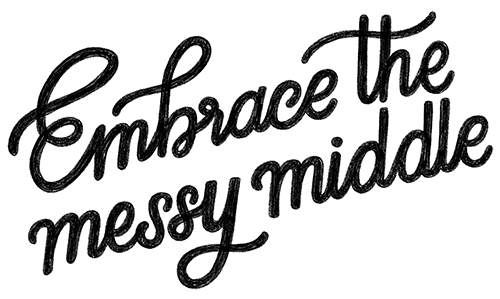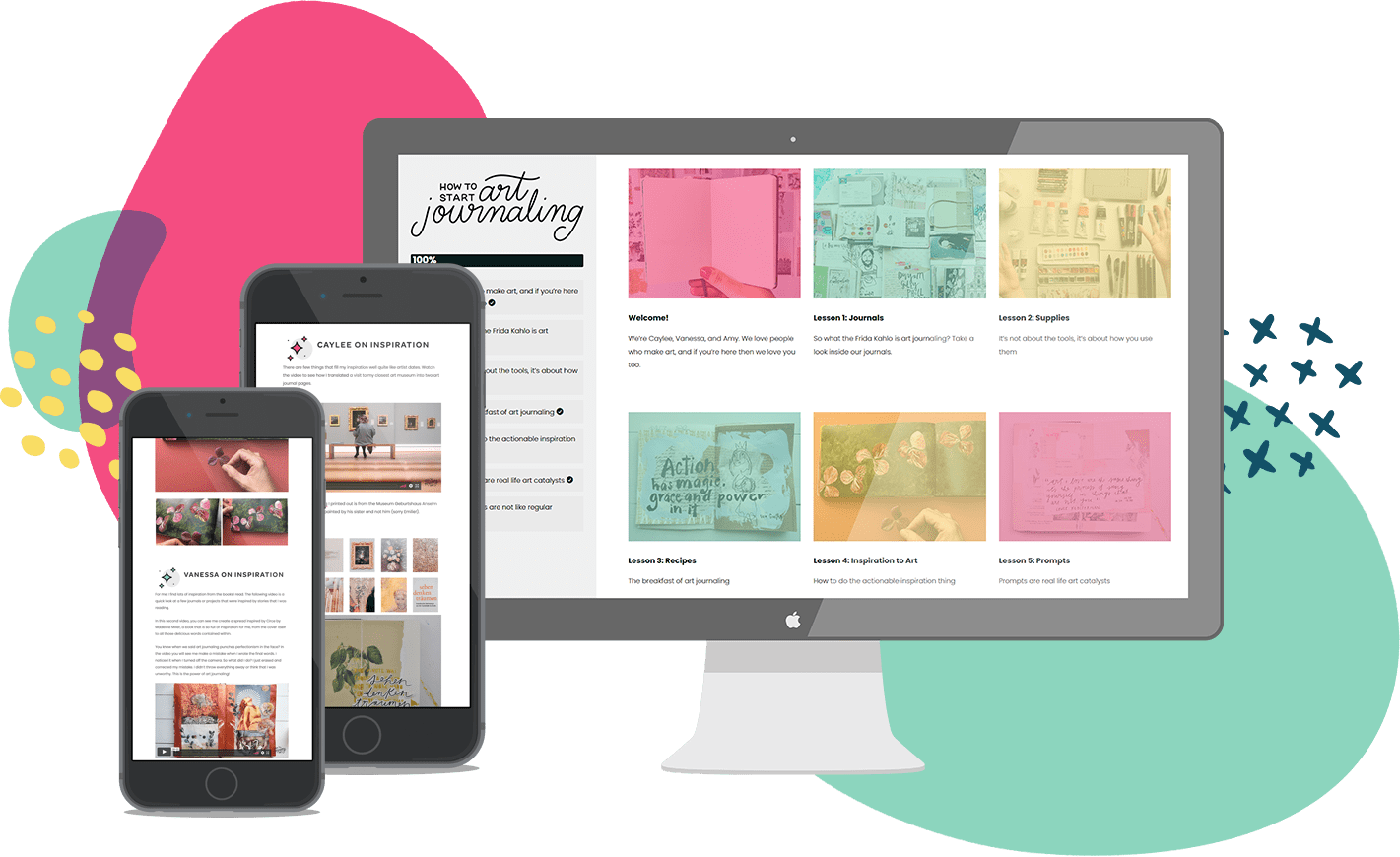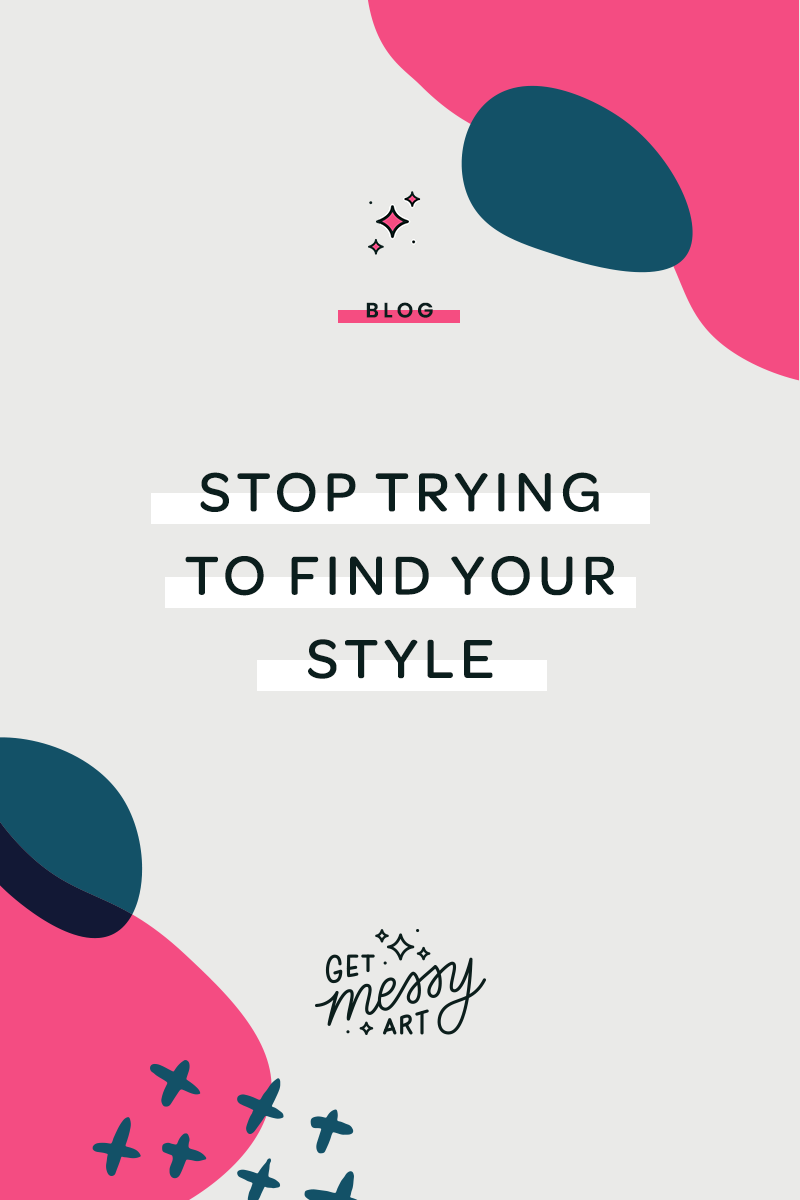As artists and creatives, we can become obsessed by the notion of style. And it’s not just us artists who are obsessed: some form of “oh yeah, what’s your style?” is without a doubt the most frequent question I get asked as an artist, from those outside the art world.
Style defines our work and gives us a way of describing our art to others. We are told invariably that style is everything: that having a recognisable style will help us to sell more work and gain more followers on Instagram. Considering this, it’s not surprising that “finding my artistic style” is one of the most frequently stated objectives when new members join the Get Messy Community – and for those embarking on their quest of style-discovery, it’s fortunate that there is a huge number of incredible resources out there to help us hone our craft, get in tune with our personal preferences and coax our style out of its hiding place.
Despite the tempting potential upshots of having a neatly definable style, however, I want to propose that style is not the be all and end all. Here’s why you should stop trying to find your style…or at least flip the idea on its head a little bit.
The Bee in my Bonnet (The Issues with the S-word)
For many years I have been uncomfortable with the word style and people’s preoccupation with their mission to find it. Here’s why.
Put bluntly, style is a dodgy term. In the fashion world, it’s often judged as good or bad, or otherwise thought of as something you’ve either got or you don’t. In the art world, talking about style is a way to define how a work looks visually and a way to make sense of an artist’s oeuvre. And, although there may be some recognisable characteristics that frequently recur within their work, the idea of style as something definable and neatly categorised is a limiting one.
Style is not something that is static. An artist’s style emerges gradually and is constantly evolving over time. Having said this, the artist too focused on the recognisable visual characteristics of their work finds themselves in a stalemate: they may have found an audience and know what makes their work visually unique, yet the ability to grow and evolve within this style’s confines is restricted. Put differently, we can (consciously or unconsciously) hold ourselves back from exploring new territory for fear of it not making sense in the context of our existing style.
My main issue with the notion of style, however, is this. To me, the word style suggests something surface level: something we put on, rather than something that comes from within. Something fabricated, rather than something intrinsic that emanates from the self.
A lesson from the trenches
In one of my drawing classes at art school, our tutor Joe spoke out to the group as he walked between our easels. We were first years; bright-eyed, bushy-tailed, and desperate to show that we had talent and personality. He said something along these lines:
“I often find that when we try too hard, it shows through. The work comes off as overworked, affected. If you stop trying to have a style and focus instead on observing and documenting that which is in front of you – or in conveying a feeling – or doing whatever task it is at hand – your personality will come through of its own accord. Automatically, without exaggeration or pretension. So stop trying, you don’t need to. What will come out will be more relaxed, more raw, more you.”
Drop the performance, recognise the fear
I recently listened to this awesome podcast conversation between Dr Rangan Chatterjee (GP and podcaster) and Dr Pippa Grange (psychologist and author Fear Less: How to Win at Life Without Losing Yourself). Pippa talks about fear being the root cause of all of our negative emotions, and our tendency to start performing when we’re caught in fear.
When we’re caught in style-chase-mode, we’re performing. Could it be that this performance also stems from a place of fear? Absolutely. From my own experience, I believe that being too focused on finding our style can stem from a fear of not being good enough. The quest for style can stem from a fear that we are actually not very unique or talented or individual, after all. The fear – the panic – the rush – cause us to clench up and start performing.
The truth
The truth is that we are all completely unique and individual, all while being completely alike and connected to each other through our existence as human beings.
The truth is, your worthiness as an artist (or a human being) is not dependent on you having a recognisable style.
Handwriting
Way back when I was eight years old, me and my girlfriends laboured for hours over our handwriting. We tried to make those fancy As and squiggly Gs. We gripped our pens tightly, perfecting our running writing and making it as neat as possible so that we would be granted the Holiest-of-Year-Four-Grails, the Pen License.
In high school, we still considered laboured over our handwriting. We tested out different pens, different slants and different speeds to see what effect it would have on the vibe of our writing and the shape of the letters we formed – I can still hear our exclamations of “oh my gosh, I love your handwriting!” echoing around in my head.
Now, years later (many years after being granted my pen license), I simply write. There is nothing to prove, rarely any self-consciousness. And each of us would recognise the handwriting of our closest family or friends in a heartbeat: regardless of whether they’ve sat down to write something in a slow, considered fashion or scribbled a note in a hurry, the personality of the writer comes through. Muscle memory doesn’t lie.
Unclenching the hand
The same is true of our artmaking. Rather than being preoccupied with making something that looks different or unique or recognisable, we can trust that our personality will shine through, regardless. This metaphorical unclenching of the hand allows us to rest in who we really are, actually creating the best conditions for our style to emerge – unselfconscious, unaffected.
I can’t remember many specifics about my drawing classes, but I remember that day standing at my drawing easel. Essentially, what Art-School-Joe was really telling us was this:
Stop performing, and start simply being. Stop trying to find your style, and your style will reveal itself to you.
If you’re on a quest to find your own artistic style, all credit to you. Who wouldn’t want to find out who they are as an artist and gain the self-assuredness that comes with it? This blog post, however, is my invitation to you to drop the doing a little bit.
Instead of asking yourselves if you’ve “made it” yet, you can ask yourselves: “How does this feel? Am I expressing something that is real to me? Does this ring true?” Instead of expending your energy focusing on the outcome or quality of your performance, you can focus on being present in the process of your art making.
Final words
You may not have a recognisable style or know who you are as an artist yet; and that’s ok. Keep making. Keep exploring. In closing I want to share with you the words and wisdom of a dear friend of mine, who once wrote the following message on a birthday card:
“Never stop being who you are – but don’t worry if you don’t quite know who that is yet.”



